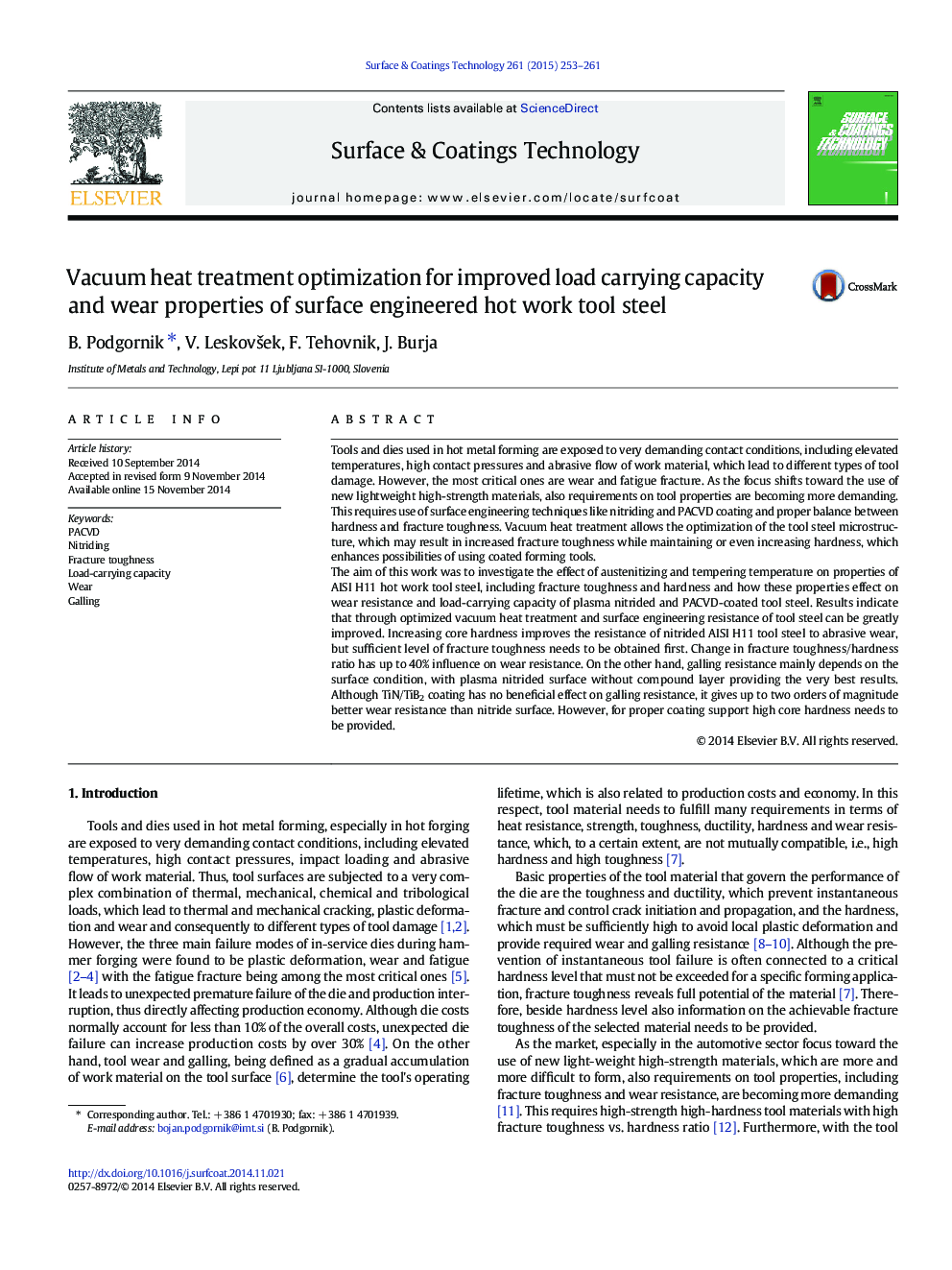| Article ID | Journal | Published Year | Pages | File Type |
|---|---|---|---|---|
| 1657311 | Surface and Coatings Technology | 2015 | 9 Pages |
•Wear resistance of nitrided hot work tool steel depends on vacuum heat treatment.•Core fracture toughness prevails over core hardness in terms of surface wear resistance.•Galling resistance mainly depends on the surface condition.•High core hardness is required for good load-carrying capacity followed by fracture toughness.
Tools and dies used in hot metal forming are exposed to very demanding contact conditions, including elevated temperatures, high contact pressures and abrasive flow of work material, which lead to different types of tool damage. However, the most critical ones are wear and fatigue fracture. As the focus shifts toward the use of new lightweight high-strength materials, also requirements on tool properties are becoming more demanding. This requires use of surface engineering techniques like nitriding and PACVD coating and proper balance between hardness and fracture toughness. Vacuum heat treatment allows the optimization of the tool steel microstructure, which may result in increased fracture toughness while maintaining or even increasing hardness, which enhances possibilities of using coated forming tools.The aim of this work was to investigate the effect of austenitizing and tempering temperature on properties of AISI H11 hot work tool steel, including fracture toughness and hardness and how these properties effect on wear resistance and load-carrying capacity of plasma nitrided and PACVD-coated tool steel. Results indicate that through optimized vacuum heat treatment and surface engineering resistance of tool steel can be greatly improved. Increasing core hardness improves the resistance of nitrided AISI H11 tool steel to abrasive wear, but sufficient level of fracture toughness needs to be obtained first. Change in fracture toughness/hardness ratio has up to 40% influence on wear resistance. On the other hand, galling resistance mainly depends on the surface condition, with plasma nitrided surface without compound layer providing the very best results. Although TiN/TiB2 coating has no beneficial effect on galling resistance, it gives up to two orders of magnitude better wear resistance than nitride surface. However, for proper coating support high core hardness needs to be provided.
